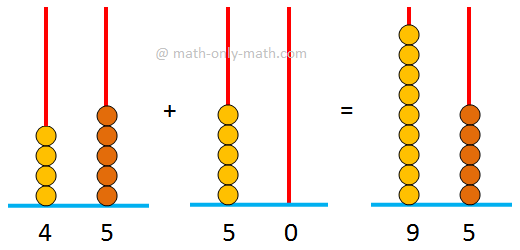Compound Interest as Repeated Simple Interest
We will learn how to calculate compound interest as repeated simple interest.
If the compound interest of any particular year is $ z; then the compound interest for the next year on the same sum and at the same rate = $ z + Interest for one year on $ z.
Thus the compound interest on a principal P for two years = (Simple interest SI on the principal for 1 year) + (simple interest SI' on the new principal (P + SI), that is, the amount at the end of first year, for one year)
In the same way, if the amount at compound interest in a particular year is $ z; then the amount for the next year, on the same sum and the same rate = $ x + Interest of $ z for one year.
Thus, the compound interest on a principal P for three years = (Simple interest SI on the principal for 1 year) + (simple interest SI' on the new principal (P + SI), that is, the amount at the end of first year, for one year) + (simple interest SI'' on the new principal (P + SI + SI'), that is, the amount at the end of second years, for one year)
This method of calculating compound interest is known as the method of repeated simple interest computation with a growing principal.
In case of simple interest the principal remains the same for the whole period but in case of compound interest the principal changes every year.
Clearly, the compound interest on a principal P for 1 year =simple interest on a principal for 1 year, when the interest is calculated yearly.
The compound interest on a principal for 2 years > the simple interest on the same principal for 2 years.
Remember, if the principal = P, amount at the end of the period = A and compound interest = CI, CI = A - P
Solved examples on Compound Interest as Repeated Simple Interest:
1. Find the compound interest on $14000 at the rate of interest 5% per annum.
Solution:
Interest for the first year = 14000×5×1100
= $700
Amount at the end of first year = $14000 + $700
= $14700
Principal for the second year = $14700
Interest for the second year = 14700×5×1100
= $735
Amount at the end of second year = $14700 + $735
= $15435
Therefore, compound interest = A – P
= final amount – original principal
= $15435 - $14000
= $1435
2. Find the compound interest on $30000 for 3 years at the rate of interest 4% per annum.
Solution:
Interest for the first year = 30000×4×1100
= $1200
Amount at the end of first year = $30000 + $1200
= $31200
Principal for the second year = $31200
Interest for the second year = 31200×4×1100
= $1248
Amount at the end of second year = $31200 + $1248
= $32448
Principal for the third year = $32448
Interest for the third year = 32448×4×1100
= $1297.92
Amount at the end of third year = $32448 + $1297.92
= $33745.92
Therefore, compound interest = A – P
= final amount – original principal
= $33745.92 - $30000
= $3745.92
3. Calculate the amount and compound interest on $10000 for 3 years at 9% p.a.
Solution:
Interest for the first year = 10000×9×1100
= $900
Amount at the end of first year = $10000 + $900
= $10900
Principal for the second year = $10900
Interest for the second year = 10900×9×1100
= $981
Amount at the end of second year = $10900 + $981
= $11881
Principal for the third year = $11881
Interest for the third year = 11881×9×1100
= $1069.29
Amount at the end of third year = $11881 + $1069.29
= $12950.29
Therefore, the required amount = $12950.29
Therefore, compound interest = A – P
= final amount – original principal
= $12950.29 - $10000
= $2950.29
From Compound Interest as Repeated Simple Interest to HOME PAGE
Didn't find what you were looking for? Or want to know more information about Math Only Math. Use this Google Search to find what you need.
Recent Articles
-
Adding 2-Digit Numbers | Add Two Two-Digit Numbers without Carrying
Mar 23, 25 12:43 PM
Here we will learn adding 2-digit numbers without regrouping and start working with easy numbers to get acquainted with the addition of two numbers. -
Worksheet on 12 Times Table | Printable Multiplication Table | Video
Mar 23, 25 10:28 AM
Worksheet on 12 times table can be printed out. Homeschoolers can also use these multiplication table sheets to practice at home. -
Vertical Subtraction | Examples | Word Problems| Video |Column Method
Mar 22, 25 05:20 PM
Vertical subtraction of 1-digit number are done by arranging the numbers column wise i.e., one number under the other number. How to subtract 1-digit number vertically? -
Worksheet on 11 Times Table | Printable Multiplication Table | Video
Mar 22, 25 05:08 PM
Worksheet on 11 times table can be printed out. Homeschoolers can also use these multiplication table sheets to practice at home. -
Worksheet on 10 Times Table | Printable Multiplication Table | Video
Mar 21, 25 03:46 PM
Worksheet on 10 times table can be printed out. Homeschoolers can also use these multiplication table sheets to practice at home.






New! Comments
Have your say about what you just read! Leave me a comment in the box below. Ask a Question or Answer a Question.